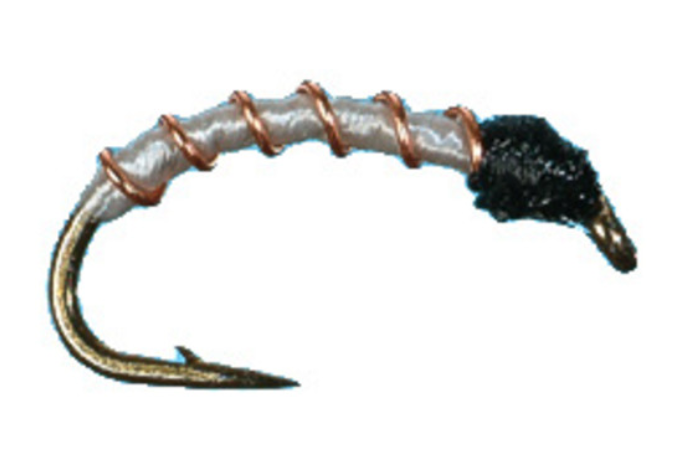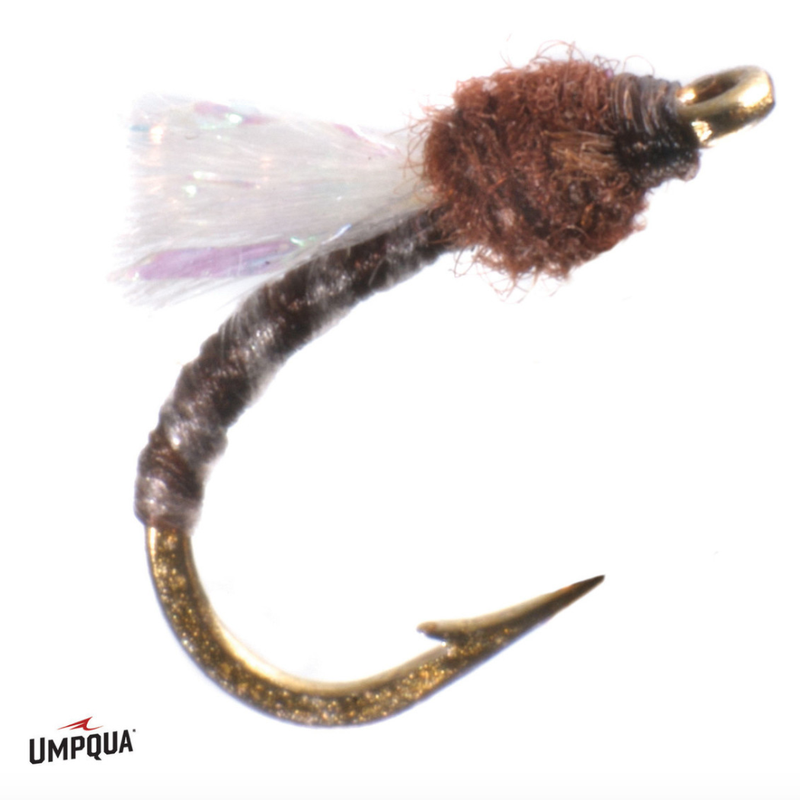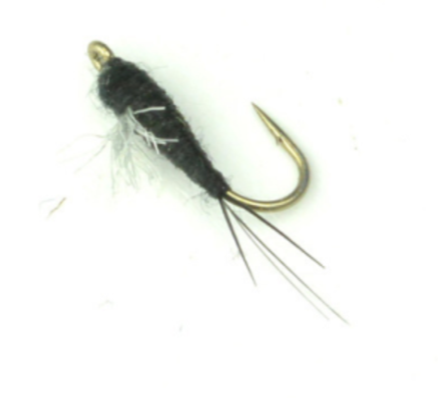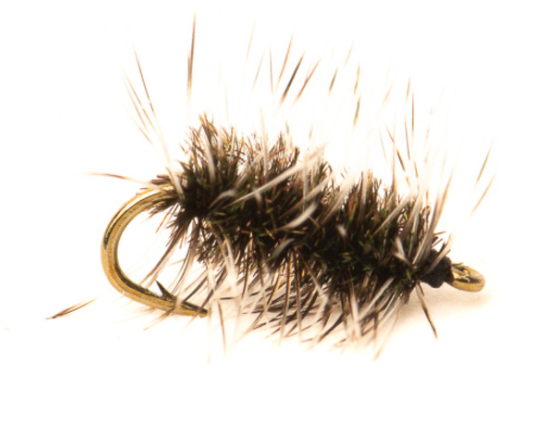It’s the first week of January and while we continue to receive sporadic warm afternoons, the reality is winter is upon us. Overnight temperatures are consistently dropping below freezing, afternoon highs are becoming more modest and trout have a much smaller menu to order from. While that may be a bummer for trout, it actually makes fly selection easier for anglers.
For the next few months, midges will be the primary bug species in our rivers and creeks. Various larva patterns will also be present in the water and attractor patterns will play an important role when conditions are in flux, but for the most part, this is the time when midges shine. To help you stock up on the winter essentials, here are eight must have patterns for winter fly fishing.
Miracle Nymph: The Miracle Nymph is a simple imitative pattern that has proven to be deadly on Colorado’s tailwaters during the winter. Its white body, black head and copper ribbing helps the fly standout at all depths of the river. Getting a trout’s attention can be difficult during the winter, which makes this the perfect lead fly on your nymph rig.

Thread Midge: During the winter, simpler is often better and that’s where this pattern comes into play. Consisting of nothing more than a size 22 – 26 hook and thread (black and red are our favorite colors), this pattern will fool even the most selective trout. Trail this pattern below a Mysis Shrimp on the Blue River below Dillon Reservoir, and you’ll be sure to land a few trout.
Mercury Black Beauty: The Mercury Black Beauty is what we’d call one of our confidence patterns. Regardless of the river, we’ve fooled more trout on this fly during the winter. The mercury bead imitates the air bubble that is created when a midge is emerging and trout can’t seem to resist it. While it can be fished in the lead position, we find it to be the most effective as you trailer pattern.
Top Secret Midge: The Top Secret Midge was created by Pat Dorsey with selective winter trout in mind. Overall, this pattern is imitative but also contains a dash of flash. A perfect balance of these two characteristics makes it a highly productive pattern when targeting selective and lethargic trout. The smaller the better when it comes to this pattern. We prefer size #24 during the winter.

WD-40: Similar to the Top Secret Midge, the WD-40 was designed for selective trout on the Frying Pan River. Mark Engler designed this pattern to imitate an emerging midge and he nailed it because trout can’t seem to resist it. During the winter, use it as a trailer fly on a nymph rig or a dropper below a small Parachute Adams.
RS2: There’s rarely a day when this fly isn’t found on the end of our line. The RS2 was designed by Rim Chung and while he didn’t have a specific bug in mind, this pattern does an incredible job imitating both midge and mayfly emergers. When trying to imitate a midge, we’ve found that a black RS2 is the most effective. Along with color, this fly is tied with various wing materials. During the winter, we prefer CDC RS2s whereas in the summer, we prefer Sparkle Wing RS2s. This is a must have fly that will rarely let you down when fished in the trailer position.

Flashback Pheasant Tail: This pattern is one of the many iterations on the classic Pheasant Tail. While the original is highly effective, we’ve found that the flashback provides the fly with just enough flash to get the attention of selective trout. As a result, we frequently use this fly as our lead attractor pattern during the winter. It effectively imitates mayfly larva but can also be used as a basic searcher pattern.
Griffiths Gnat: If you’re an angler who’s always looking for a dry fly opportunity, this is the fly to have in your box during the winter. While dry fly opportunities are scarce during the cold months, midges continue to hatch and this pattern does a fantastic job of imitating a single adult midge or a cluster of mating midges.

